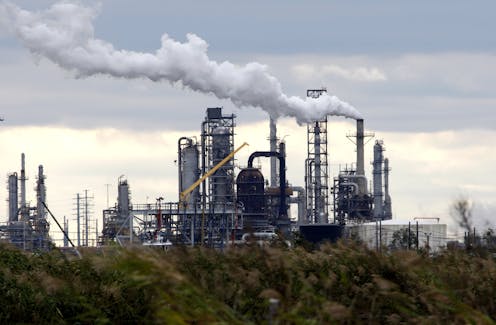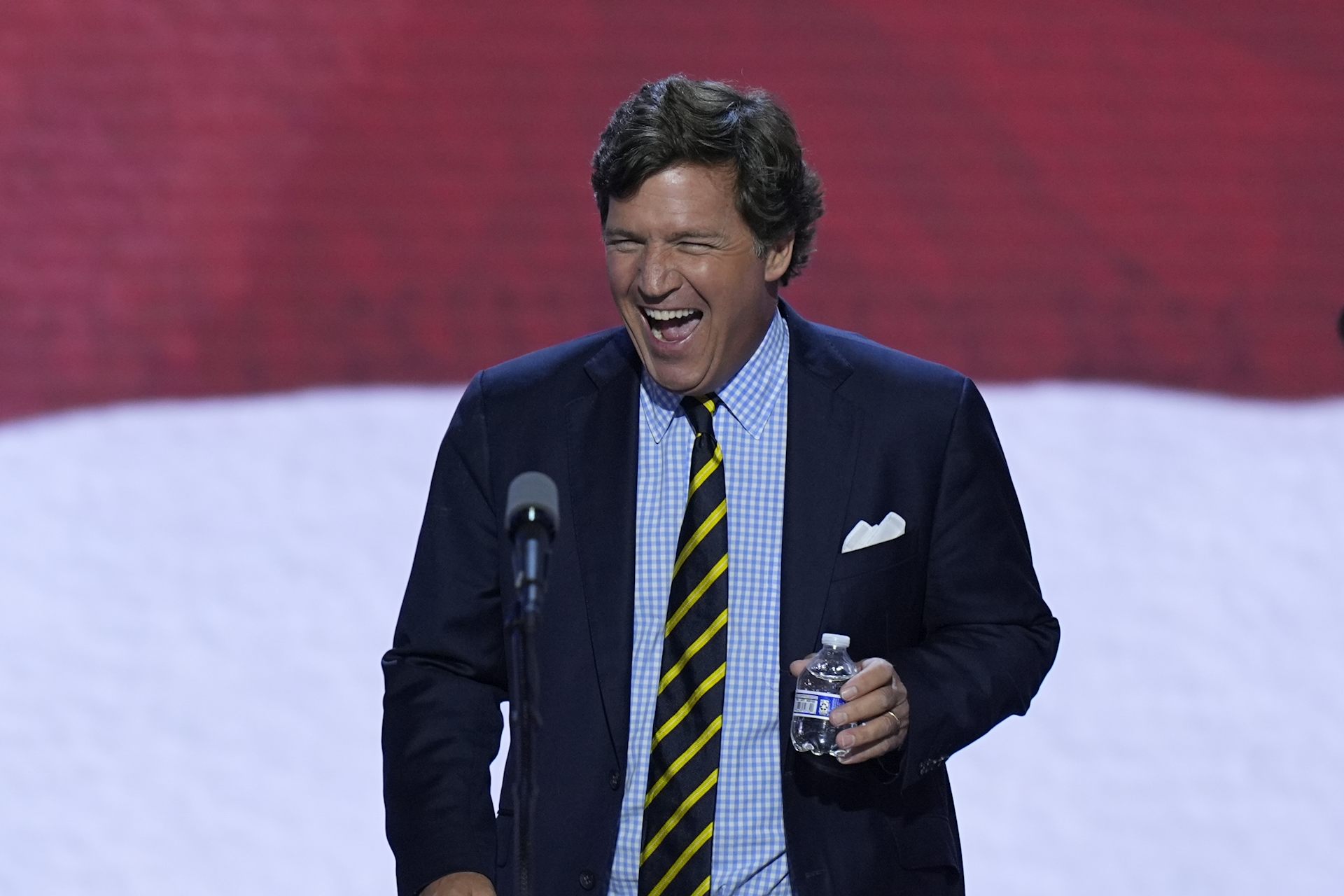The EPA has backed off enforcement under Trump – here are the numbers
Data gathered from EPA reports, staffers and retirees show the Trump administration has brought fewer environmental enforcement actions to conclusion and deferred more to states.

The Trump administration has sought to weaken the Environmental Protection Agency in a number of ways, from staff and proposed budget cuts to attempts to undermine the use of science in policymaking.
Now, our new research finds that one of the EPA’s most important functions – enforcement – has also fallen off dramatically.
Since its founding, the EPA has been the nation’s environmental enforcer of last resort. Enforcing environmental laws is a fundamental role of the EPA. William Ruckelshaus, the agency’s first administrator, famously described its role in environmental enforcement as that of a “gorilla in the closet” – muscular, dexterous, smart and formidable – not omnipresent, but ready to take decisive action to enforce laws if need be.
But the data we have collected show that EPA enforcement under Trump is more accurately characterized as sheep-like – meek and mild, often following the lead of regulated industry rather than acting as an independent, scientifically and statutorily driven regulator. The report is based on interviews with EPA staff and recent retirees and analysis of the EPA’s own data and internal documents. In this article we’ve also used recently updated data and included an expanded analysis of regional and statutory declines.
Our analysis of the EPA’s preliminary data – the raw data that forms the basis of the final numbers that will be published in the agency’s annual report – shows the agency’s enforcement of federal environmental laws has decreased dramatically under the Trump administration. There have been steep drops in civil and criminal enforcement, and across environmental programs under major environmental laws like the Clean Air Act and Clean Water Act, and in nearly all regions of the U.S.
Enforcement, in general, takes many forms. Various statutes direct the EPA to ensure compliance with environmental laws in different ways. Polluters may have to clean up their pollution, stop doing an environmentally harmful activity, or pay fines for violating an environmental law.
For example, in 2016, the EPA found that CITGO Petroleum Corporation’s refineries were in violation of the Clean Air Act regulations on benzene emissions and flare operations. Benzene is known to cause cancer. The EPA and CITGO settled before going to court, with CITGO required, among other things, to pay almost US$2 million in civil penalties, install technologies to reduce benzene emissions and flares, and put benzene monitors around its facility.
Some violations of environmental law are criminal, and can result in criminal fines and jail sentences. However, most enforcement actions are civil, and rich data on criminal enforcement is not yet publicly available for 2018, so we have focused on the civil side.
Civil enforcement actions in fiscal year 2018 were the lowest they have been in at least 10 years. EPA orders requiring industry to comply with environmental regulations, reimburse the agency for cleaning up hazardous waste, and pay fines for illegally polluting the air, water and land have steadily declined under the Trump administration. Enforcement of every major statute – from the Clean Air Act to the Toxic Substances Control Act – has fallen since the previous fiscal year. And these drops have occurred in every EPA region.
The EPA is also imposing fewer fines on environmental law breakers. The EPA imposed civil penalties of $58 million in fiscal year 2018, the lowest since at least 2006 by a wide margin. The average for the period from 2006 to 2017 was $846 million, and the next lowest year (2009) still had $109 million in fines.
Costs for regulated entities to comply with environmental regulations, such as upgrading pollution control equipment, were the lowest they have been in at least 12 years. Compliance costs in 2018 were $3.8 billion, down 81 percent from the previous year, and well below the average of $10.9 billion from 2006 to 2017.
Finally, inspections are also down, which means that the EPA does not know if many facilities are complying with the law, and, further, that next year’s enforcement actions will also be low.
Extreme deference to states
In interviews with EDGI researchers, EPA staff discussed how these significant changes to EPA enforcement have happened so quickly. They reported a process where Trump’s political appointees appear to be using under-the-radar shifts in agency policy and procedures to weaken enforcement.
The best example of this is past EPA Administrator Scott Pruitt and current Administrator Andrew Wheeler’s embrace of “cooperative federalism,” which the agency describes as “working collaboratively with states, local government, and tribes.” But staff told us that in practice it means extreme deference to states.
Since the EPA was established, its role has been to collaborate with states to enforce environmental laws. Most enforcement happens at the state level. The EPA’s role is to provide oversight and funding, address interstate pollution, make technical assistance and inspection equipment available, and step in when cases are large and/or complex or the state is not doing the job.
One example of this is EPA’s role in cleaning up the Chesapeake Bay, a critical ecosystem which suffers from a large number of environmental impacts originating in multiple states. The EPA works with six states on programs to reduce pollution to the bay and watershed.
We found what has changed under the Trump administration is that under the guise of cooperative federalism, staff are getting the message from management to leave states alone, rather than act as strong backup to their efforts. “If a state government decides enforcement isn’t important, in the past EPA might step up its efforts in that state. Now we’re really not allowed to unless there is some justification,” one staffer told us.
Budget impact
State environmental programs are also vulnerable to funding cuts and may lack equipment and highly trained staff for complex inspections. When industries operate in multiple states, the EPA brings an important national perspective on compliance issues that can increase the efficiency of inspection and enforcement.
A good example of this is a national enforcement program focused on addressing environmental problems caused by oil and gas extraction that have occurred in multiple states. The EPA brings lessons learned on how to address these problems to all affected states. However, under the Trump administration, it appears that this initiative is being phased out.
The EPA can also typically impose fines on industries that violate environmental laws and can turn egregious cases over to the Department of Justice for further action. The threat of the EPA taking action against a polluter can serve as a strong incentive for compliance.
Combined with regulatory rollbacks and structural weakening of the EPA, the steep declines in enforcement nearly across the board show that Trump’s EPA is on what we consider a dangerous path – one that is at risk of failing in its mission to protect public health and the environment from a wide range of threats such as climate change, air and water pollution, and exposure to toxic chemicals.
Marianne Sullivan received funding from the Environmental Protection Agency Science to Achieve Results grant program from September 2005-September 2008. She is affiliated with the Environmental Data and Governance Initiative. She is currently a Visiting Fellow at Ecologic Institute in Berlin, Germany.
Chris Sellers is affiliated with the Environmental Data and Governance Initiative.
Leif Fredrickson works for the Environmental Data & Governance Initiative.
Sarah Lamdan is affiliated with the Environmental Data and Governance Initiative.
Read These Next
Billionaires with $1 salaries – and other legal tax dodges the ultrawealthy use to keep their riches
The richest Americans can largely avoid paying income and other taxes. A new book explains the history.
The US already faces a health care workforce shortage – immigration policy could make it worse
About 1 in 4 doctors practicing in the US were born abroad.
America faced domestic fascists before and buried that history
Although thousands of Americans embraced fascist ideas during the interwar years, a new study examines…






